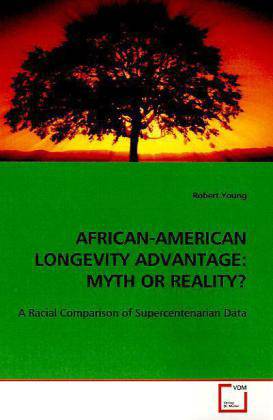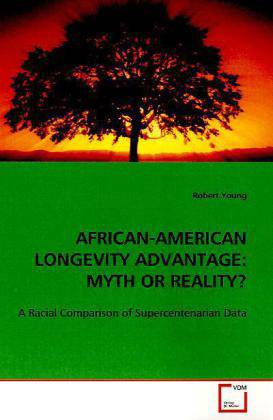
- Afhalen na 1 uur in een winkel met voorraad
- Gratis thuislevering in België vanaf € 30
- Ruim aanbod met 7 miljoen producten
- Afhalen na 1 uur in een winkel met voorraad
- Gratis thuislevering in België vanaf € 30
- Ruim aanbod met 7 miljoen producten
Zoeken
AFRICAN-AMERICAN LONGEVITY ADVANTAGE: MYTH OR REALITY?
A Racial Comparison of Supercentenarian Data
Robert Young
Paperback | Engels
€ 77,95
+ 155 punten
Omschrijving
Demographic researchers have identified a crossover
pattern between the mortality rates of the Caucasian-
American and African-American oldest-old (80+)
populations for over a century. Debate has centered
on whether the crossover effect is due to age
misreporting or the heterogeneity hypothesis or if
it continues beyond age 99. This thesis addresses
these issues by using new data from the United
States Social Security Administration's study of
supercentenarians (persons 110 or older), which
began in the year 2000. The study identified 355
persons aged 110 or older whose ages could be
verified, creating the first reliable American
dataset for this population group. The author of
this book, Robert Young, was involved in the study
as a case researcher and therefore had access to the
data. Analyzing the data, Young attempts to
determine whether this phenomenon is due to fact or
fiction. By first analyzing the history of longevity
mythmaking and race, including the African-American
myth of longevity, the author provides a contextual
background in which to view the results. Young then
turns to the suprising findings and discusses their
possible causes.
pattern between the mortality rates of the Caucasian-
American and African-American oldest-old (80+)
populations for over a century. Debate has centered
on whether the crossover effect is due to age
misreporting or the heterogeneity hypothesis or if
it continues beyond age 99. This thesis addresses
these issues by using new data from the United
States Social Security Administration's study of
supercentenarians (persons 110 or older), which
began in the year 2000. The study identified 355
persons aged 110 or older whose ages could be
verified, creating the first reliable American
dataset for this population group. The author of
this book, Robert Young, was involved in the study
as a case researcher and therefore had access to the
data. Analyzing the data, Young attempts to
determine whether this phenomenon is due to fact or
fiction. By first analyzing the history of longevity
mythmaking and race, including the African-American
myth of longevity, the author provides a contextual
background in which to view the results. Young then
turns to the suprising findings and discusses their
possible causes.
Specificaties
Betrokkenen
- Auteur(s):
- Uitgeverij:
Inhoud
- Aantal bladzijden:
- 212
- Taal:
- Engels
Eigenschappen
- Productcode (EAN):
- 9783639105704
- Uitvoering:
- Paperback

Alleen bij Standaard Boekhandel
+ 155 punten op je klantenkaart van Standaard Boekhandel
Beoordelingen
We publiceren alleen reviews die voldoen aan de voorwaarden voor reviews. Bekijk onze voorwaarden voor reviews.








